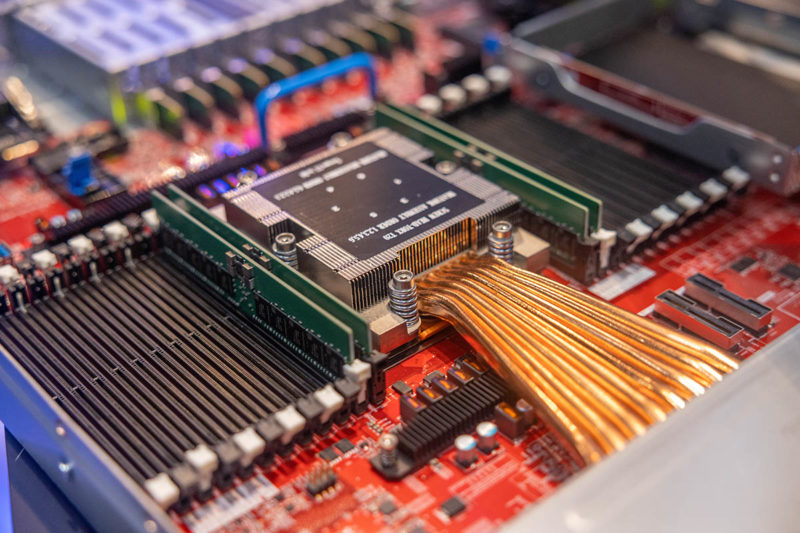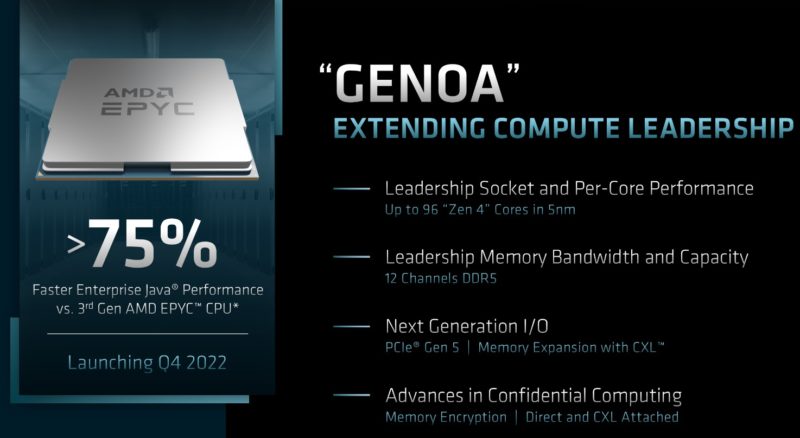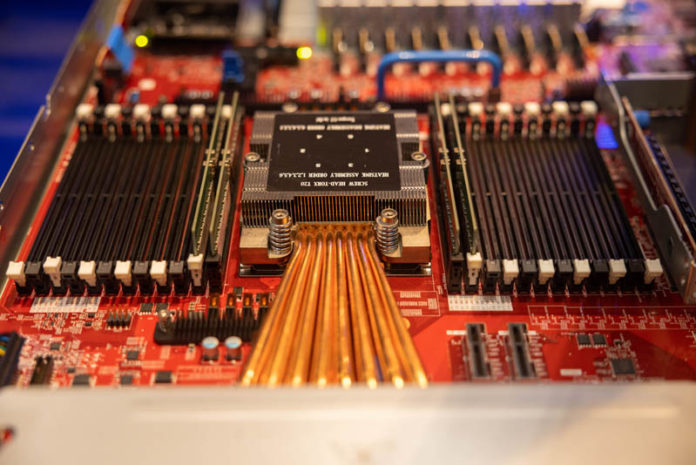Get ready. I saw the press release from AMD and confirmed with our Editor-in-Chief Patrick that this is happening. The next-generation AMD EPYC Genoa is officially launching on November 10, 2022.
AMD EPYC Genoa Launches 10 November 2022
Last week at OCP Summit 2022, we saw the AMD EPYC Genoa platform used by Microsoft sneak out.

We already know the next-generation parts will be huge, and not just based on what Microsoft showed. We have up to 96 cores and Zen 4 on 5nm. There is the 12-channel DDR5 memory as well as more PCIe Gen5 capabilities.

Whereas Intel is focused on a strategy of “More Accelerators, More Better” and Arm is on “More Cores, More Better”, AMD is somewhat of a mix between them.
We expect the AMD EPYC Genoa part to be extremely competitive in the market based on what we have seen with Zen 4 on the desktop side (e.g. in our Falcon Northwest Talon AMD Ryzen 9 7950X Workstation Review.)
Final Words
As one would imagine, we are not allowed to talk more about the performance of next-generation parts at this time. We have many systems running, but we are under embargo at this point.
Still, stay tuned to STH. Likely tomorrow or Wednesday, we will have more hands-on with Sapphire Rapids’s onboard accelerators and the Intel Xeon D-2700 series accelerators as part of the series that we started with Intel QuickAssist in Ice Lake Servers What You Need to Know. The acceleration angle that Intel is using is very different from AMD’s EPYC strategy.
Again, we have been excited for some time now to show you Genoa as we did with Naples, Rome, Milan, and Milan-X. Based on AMD’s press release today, you can expect that piece to come in the next two and a half weeks or so.





“The acceleration angle that Intel is using is very different from AMD’s EPYC strategy.”
Intel really seems desperate when silly features are the last selling points they have left.
Optane as a differentiator was ridiculous too. You believed in that too ;).
It was almost as bad when IBM tried to sell accelerators as differentiators…
My car has an accelerator and it mostly works. Specific software is needed for a computer accelerator to work.
Before suitable software becomes widely available, it needs to be written. For software to be written, the accelerator needs to become mainstream. In order to become mainstream the the accelerator needs to be cheap.
That means high-end server-only accelerators are unlikely to achieve the software support needed to be successful.
More cores can be used immediately.
Eric Olsen: the problem with your scenario is that Data Centers have lots of need for anything that can accelerate their work loads and companies that need them are willing to pay for them. Thus they don’t have to be cheap enough for commodity hardware. That’s the direction Nvidia went with the 4xxx series of GPUs.
From the little I’ve investigated, most of the Nvidia Accelerators (Ada/Hopper) all use Cuda and Nvidia has a good software stack to compile the code due to the many HEDT/Super Computers that depend on it.
The same CUDA stack that runs on $10000 accelerators in the data center and HPC computing centers also runs (though slower) on consumer graphics cards. In my opinion the success of Nvidia supports the viewpoint that commodity hardware is needed for the widespread development of software applications that support a particular type of accelerator framework.
@Eric: regarding “commodity hardware”
The QAT adaptors have been available for more than 4 years at reasonable price but next to no one is using them in regular servers.
What kind of small company wants to invest in a proprietary solution that might bring all kinds of new bugs and security problems with it?
On the other hand: just using standard protocols won’t solve these big companies problems. just look at Google Clouds PSP and why they don’t want TLS/IPsec (memory):
https://cloud.google.com/blog/products/identity-security/announcing-psp-security-protocol-is-now-open-source?hl=en
Big companies like Google, AWS, Azure and even Cloudflare don’t want acceleration with these limitations. They all are choosing DPUs now where they can do whatever they want.
It’s going to be very hard to sell these built-in “accelators” when more flexible DPUs are around.
AMX is different but AMX won’t be competitive with GPUs in almost all scenarios.
Can’t wait to get my Dual Socket overclocked AMD EPYC 9664X3D with 12 TB of DDR5 6000 MHz CL30 RAM and 2X overclocked AMD Radeon Pro 7900 48 GB variants and a 10K 240 Hz monitor connected via 2 Displayport 2.1 connectors each one to one of those AMD Radeon Pro 7900 48 GB GPUs. and a petabyte of NVME PCIE 5.0 Storage.